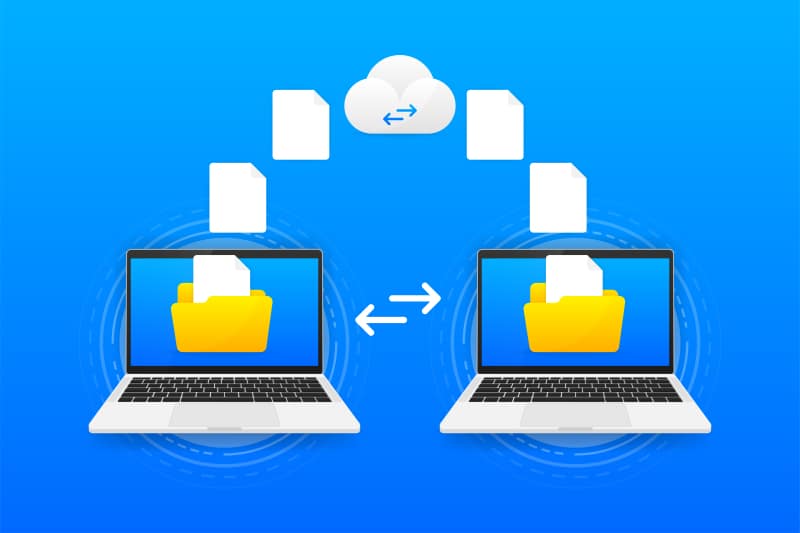Businesses across industries are constantly evolving to keep pace with changes in today’s dynamic digital landscape, and the need to move data from one system to another is a common requirement. Data migration is a imperative for businesses aiming to stay competitive and efficient in a rapidly changing environment. The ability to seamlessly move and manage data while preserving its quality is a key driver for operational success, efficiency, and maintaining trust in data-driven decision-making. Ensuring a smooth transition involves not only meticulous planning and thorough testing but also essential components like data conversion and data cleansing services. These outsourced solutions play a pivotal role in transforming and optimizing your data for its new environment, enhancing data quality, and eliminating inconsistencies.
Top Strategies for Smooth Data Migration
Whether you’re upgrading your technology stack, moving to the cloud, consolidating databases, or undergoing a system overhaul, data migration is a critical process that can significantly impact your operations, efficiency, and data integrity.
Let’s explore eight best practices that encompass every phase of seamless data migration.
- Thorough planning: Assessing your data migration needs is the cornerstone of a successful transition, minimizing risks and ensuring accurate data transfer. Begin by comprehensively identifying your existing data, including volume, format, and location, encompassing databases, files, spreadsheets, and other sources. Evaluate data relationships and categorize based on business importance, prioritizing critical data for migration. Factor in data retention policies, compliance, and legal regulations that may impact the migration process.
- Develop a well-defined data migration strategy: This is critical to ensure a seamless transition, minimize downtime, maintain data integrity, and reduce the risk of errors during the migration process. Select the suitable migration method, which could involve a direct migration, phased migration, or a parallel run, based on factors like data volume, system complexity, and resource availability. Develop clear data mapping and transformation guidelines to harmonize the data formats between the old legacy system and the new ERP system. Employing a comprehensive strategy will mitigate disruptions throughout the migration process.
- Data mapping: Clearly map the structure and relationships of your old data to fit the new system’s requirements. A well-defined and thorough data mapping process is essential to ensure a successful and accurate data migration, minimizing risks and maintaining the value of the data in the new system. Data mapping is typically done during the planning and preparation stages of the data migration process. It ensures that data is properly transformed and integrated during the migration process, maintaining data integrity and consistency. This critical step requires collaboration between business analysts, data engineers, and subject matter experts from both the source and target systems.
- Back up your data before initiating the migration: Data migration entails significant risks, including the loss of vital business assets or mishandling sensitive data. Backup, monitoring, security, and support are crucial. Data backup before migration is essential for safety and integrity, enabling quick recovery and a second attempt if needed. A backup ensures accuracy by comparing original and migrated data. Choose a suitable backup method based on data volume, type, and systems, ensuring completeness, error-free copies stored securely away from the original data and migration environment. Perform a restoration test to confirm successful restoration capability.
- Pay attention to data cleansing and conversion requirements: Ensure smooth transitions and optimal data utilization by enhancing data quality. Eliminate duplicates, outdated, and irrelevant data from migration. If migrating to a system with different standards, assess data transformation needs. Professional data conversion services can help manage Execute the migration in phased stages with rigorous testing to reduce disruptions. Maintain the original source data/system during migration, even if data issues arise.
- Perform testing and validation: Regularly test and measure the migration at different stages, using trials to validate assessments, compare with live processes, and assess the performance of migrated systems. Create diverse test scenarios covering new ERP aspects, ensuring data integrity and functionality, with comprehensive end-to-end tests. These tests ensure data remains intact, systems function as intended, and allow for refining migration strategies. Post-migration, ongoing auditing and testing are crucial, especially as new data generates fresh challenges. Continuous testing confirms system functionality, facilitates adaptation and improvement of procedures, and informs future migration strategies.
- Data security: Data security during data migration is essential to protect sensitive information from unauthorized access, data breaches, and corruption. Assess the security measures needed for sensitive data during migration and in the new system. Ensure that appropriate encryption and access controls are in place. Implement security measures such as encrypting data in transit and at rest, using strong passwords, MFA, and RBAC to restrict data access, masking sensitive data during testing, deploying firewalls for network separation, and verifying security practices of third-party tools. Educate employees on data security, confidentiality, and proper data handling.
- Conduct a post-migration review: The post-data migration review is an essential step to validate the success of the migration, address any lingering issues, and ensure that the new system is fully operational and is functioning as expected. Conduct a thorough review and verify that the data migrated to the new system is accurate, complete, and consistent with the original source. Gather feedback from end-users who interact with the new system. This feedback can help identify any usability concerns, challenges, or unanticipated issues that might have arisen during the migration.
Data migration is an essential process in today’s ever-evolving business landscape. Its impact on operations, efficiency, and data integrity is undeniable. By adhering to best practices, from meticulous planning and seamless data conversion to thorough testing and vigilant post-migration review, organizations can ensure successful transitions and unlock the full potential of their data. Leveraging back office outsourcing services for specific aspects of data migration can help companies streamline the migration process. Having the right support for tasks such as data entry, cleansing and conversion will ensure that the data being migrated is of the highest quality, ultimately leading to a more successful and efficient migration.
Transform, optimize, and elevate your data with our top-notch data conversion services!




